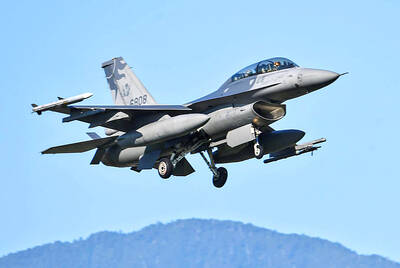The Health Promotion Administration (HPA) yesterday urged people to say no to betel nuts, as they are listed as a Group 1 carcinogen by the International Agency for Research on Cancer.
The HPA said that some people might have the misconception that it is safe to chew betel nuts without lime and tobacco paste, but the agency has shown that chewing the nut itself can cause cancer.
Betel nuts contain arecoline and arecaidene, which with frequent exposure can damage periodontal tissue, increasing the risk of cancer, the HPA said, adding that chewing betel nuts can also cause bleeding gums, bad breath, difficulty swallowing and injury to the oral mucosa.
Tsai Kuo-yang (蔡國陽), a physician at Changhua Christian Hospital’s Division of Oral and Maxillofacial Surgery, said that the fibers of betel nuts can damage gums and cause gastric ulcers.
“Chewing on the rough betel nut fibers can easily injure the oral mucosa, and repeated injury can cause oral mucosal lesions and oral submucous fibrosis,” or inflammation and progressive fibrosis of submucosal tissue, Tsai said.
An HPA survey in 2017 that asked why respondents first tried betel nuts showed that 43 percent did so out of curiosity, 26.9 percent did so to make friends, 13.2 percent said it was for work, 9.2 percent said it was for refreshment and 6.4 percent said it was to keep warm.
HPA acting director-general and Chronic Disease Control Division official Chia Shu-li (賈淑麗) said that some people chew betel nuts to keep themselves awake or warm, but they could replace the nuts with healthy alternatives.
More than 7,000 men were diagnosed with oral cancer in 2018 and more than 3,000 died of oral cancer in 2019, Chia said, adding that chewing betel nuts is one of the main risk factors of oral cancer.
An oral mucosa examination is offered once every two years to people aged 30 or older who chew betel nuts or smoke, and to people aged 18 to 29 who chew betel nuts to help prevent oral cancer, the HPA said.

The first two F-16V Bock 70 jets purchased from the US are expected to arrive in Taiwan around Double Ten National Day, which is on Oct. 10, a military source said yesterday. Of the 66 F-16V Block 70 jets purchased from the US, the first completed production in March, the source said, adding that since then three jets have been produced per month. Although there were reports of engine defects, the issue has been resolved, they said. After the jets arrive in Taiwan, they must first pass testing by the air force before they would officially become Taiwan’s property, they said. The air force

The Chinese People’s Liberation Army Navy’s (PLAN) third aircraft carrier, the Fujian, would pose a steep challenge to Taiwan’s ability to defend itself against a full-scale invasion, a defense expert said yesterday. Institute of National Defense and Security Research analyst Chieh Chung (揭仲) made the comment hours after the PLAN confirmed the carrier recently passed through the Taiwan Strait to conduct “scientific research tests and training missions” in the South China Sea. China has two carriers in operation — the Liaoning and the Shandong — with the Fujian undergoing sea trials. Although the PLAN needs time to train the Fujian’s air wing and

STRIKE: Some travel agencies in Taiwan said that they were aware of the situation in South Korea, and that group tours to the country were proceeding as planned A planned strike by airport personnel in South Korea has not affected group tours to the country from Taiwan, travel agencies said yesterday. They added that they were closely monitoring the situation. Personnel at 15 airports, including Seoul’s Incheon and Gimpo airports, are to go on strike. They announced at a news conference on Tuesday that the strike would begin on Friday next week and continue until the Mid-Autumn Festival next month. Some travel agencies in Taiwan, including Cola Tour, Lion Travel, SET Tour and ezTravel, said that they were aware of the situation in South Korea, and that group

Taiwanese celebrities Hank Chen (陳漢典) and Lulu Huang (黃路梓茵) announced yesterday that they are planning to marry. Huang announced and posted photos of their engagement to her social media pages yesterday morning, joking that the pair were not just doing marketing for a new show, but “really getting married.” “We’ve decided to spend all of our future happy and hilarious moments together,” she wrote. The announcement, which was later confirmed by the talent agency they share, appeared to come as a surprise even to those around them, with veteran TV host Jacky Wu (吳宗憲) saying he was “totally taken aback” by the news. Huang,